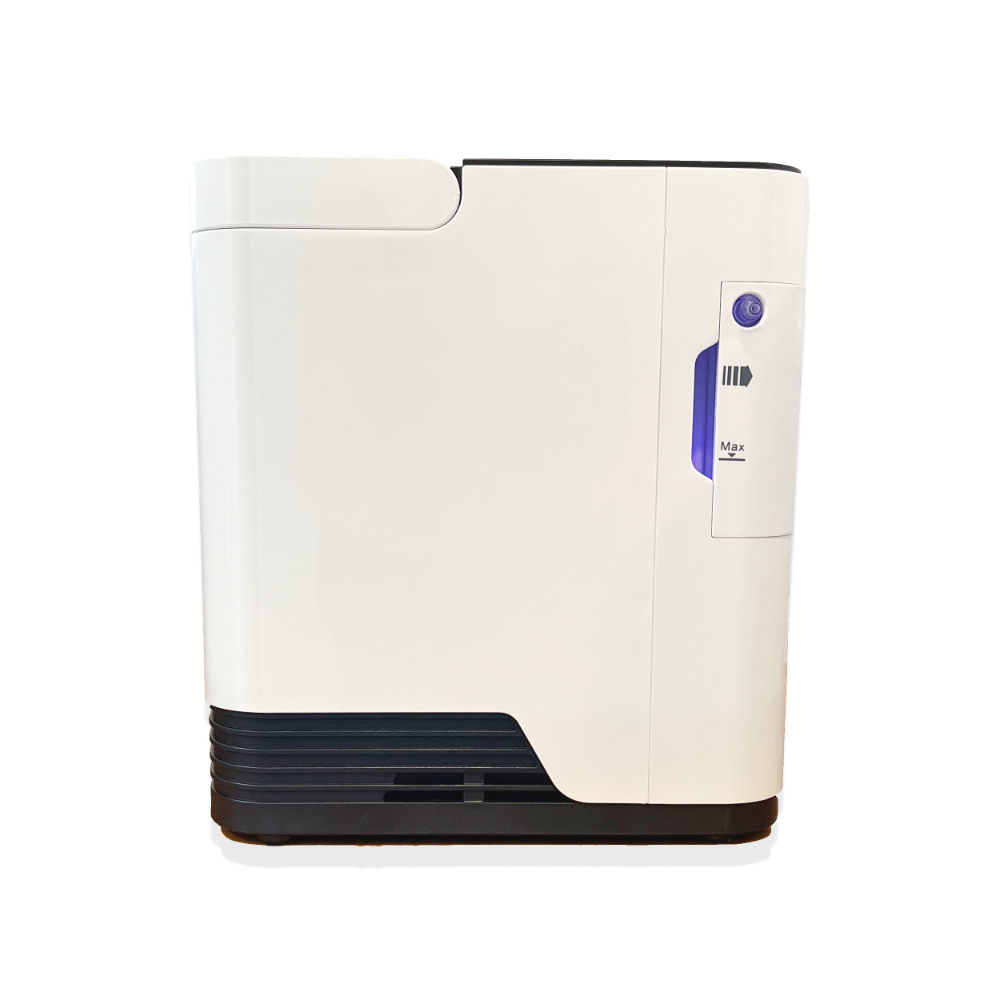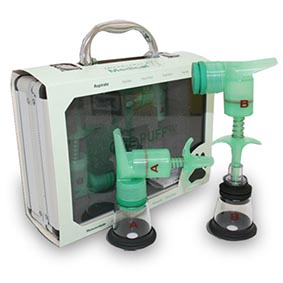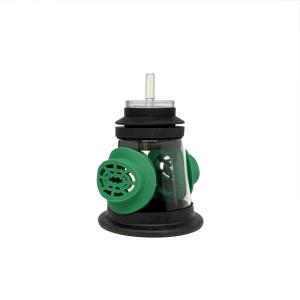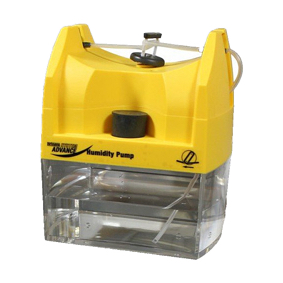Oxygen Concentrator 1-7L (per minute)
An oxygen concentrator is a medical device that takes in air from the surrounding environment, removes nitrogen and other gases, and delivers concentrated oxygen to the patient. Oxygen concentrators are designed for continuous and intermittent use, and they are a reliable source of supplemental oxygen. They are commonly used at home, in hospitals, and in other healthcare settings to provide patients with a steady oxygen supply.
Features:
- Can supply continuous flow 1-7L/min at various pre-determined oxygen concentrations. Factory settings (oxygen concentration and flow rate) include:
- 1L 90%
- 2L 65%
- 3L 55%
- 4L 50%
- 5L 40%
- 6L 35%
- 7L 30%
- Timer Function with 30-minute increments up to 4hours
- Inbuilt carry handle
- Australian Plug
- Remote control
- 1.5m oxygen tube
- Nebuliser cup
Caution! While oxygen itself is not flammable, it supports combustion. This means that a fire or spark in the vicinity of an oxygen-enriched environment can accelerate the combustion process and make fires burn more fiercely.
Precautions:
- Materials Ignition: In the presence of high concentrations of oxygen, certain materials that are normally non-combustible can become flammable. Materials such as oils, grease, and some plastics may ignite more easily in the presence of high oxygen levels.
- Electrical Equipment: Oxygen concentrators contain electrical components, and any electrical device poses a potential fire risk. Malfunctions, short circuits, or other electrical issues could lead to sparking, which, in the presence of concentrated oxygen, may increase the risk of fire.
- No Smoking: It’s crucial to avoid smoking in areas where oxygen is in use, as open flames and sparks can lead to ignition in an oxygen-enriched environment.
- Proper Ventilation: Adequate ventilation is important to prevent the buildup of oxygen in confined spaces. Concentrated oxygen leaking from the device could accumulate, increasing the risk of fire.
- Follow Safety Guidelines: Users of oxygen concentrators should strictly adhere to safety guidelines provided by the manufacturer and healthcare professionals. This includes proper placement of the concentrator, regular maintenance, and avoiding the use of flammable substances in the vicinity.
- No Oil-Based Products: Avoid using oil-based products, such as petroleum jelly or oil-based lotions, around the oxygen concentrator, as these substances can increase the risk of fire.
How do Oxygen Concentrators work?
- Air Intake: The concentrator pulls in room air through an intake filter. Room air typically consists of approximately 78% nitrogen, 21% oxygen, and small amounts of other gases.
- Compressor: The air is then passed through a compressor, which increases the pressure of the incoming air. This compressed air is directed into the next component.
- Sieving Process – Molecular Sieves: The heart of the oxygen concentrator is a material called a molecular sieve, typically made of zeolite minerals. These sieves have a specific affinity for nitrogen molecules, allowing them to adsorb nitrogen from the compressed air selectively.
- Sieving Process – Separation of Gases: As the compressed air passes through the molecular sieve bed, nitrogen molecules are selectively captured, leaving behind a stream of highly concentrated oxygen.
- Oxygen Delivery: The concentrated oxygen is delivered to the patient through a tubing system and a nasal cannula or mask. The delivered oxygen can have a purity of 90-95% or higher, depending on the design and efficiency of the oxygen concentrator.
- Exhaust: The remaining nitrogen and other trace gases are vented out of the concentrator. This exhaust air usually contains a lower oxygen concentration and is released back into the room.
- Oxygen Flow Control: Most oxygen concentrators allow for adjusting the flow rate, enabling healthcare providers to prescribe the appropriate amount of oxygen for a patient’s specific needs.
| Weight | 7.1 kg |
|---|---|
| Dimensions | 37 × 27 × 37 cm |
Only logged in customers who have purchased this product may leave a review.


















Reviews
There are no reviews yet.